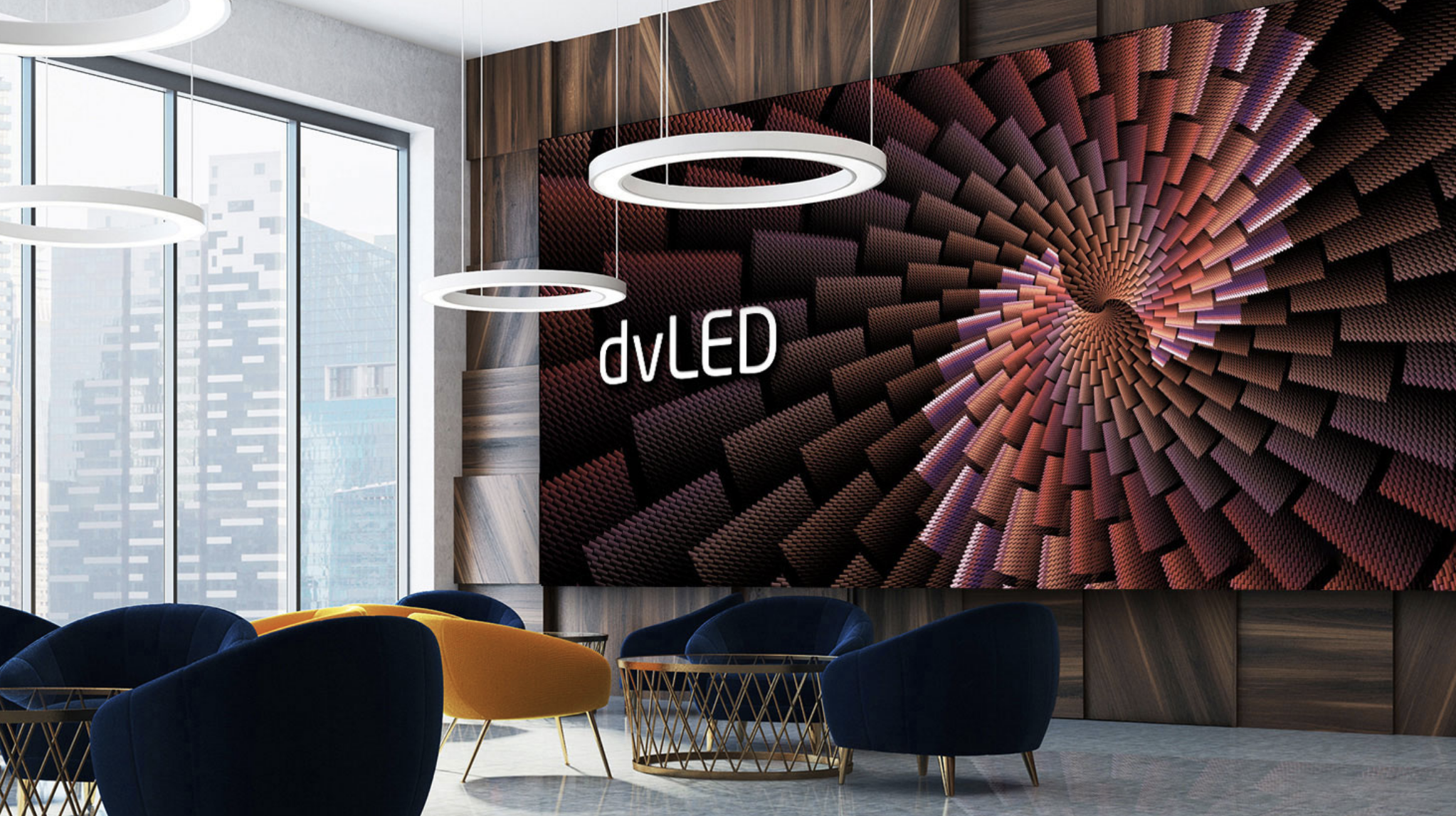Tips for Installing a dvLED Wall in a Snap
DvLED video walls have different installation requirements than other display options.

With so many advances in digital display technology in the last decade, the types of displays and video walls that consumers expect to see has changed over time. We see an increasing need for large video walls that deliver memorable first impressions and achieve maximum impact. True video walls are not simple LCD screens, they require something more because they are something more. They are intended to be the eye-catching, mind-blowing centerpiece that delivers nothing short of that wow factor.
Traditional LCD-based video displays are workhorses, but they can’t get away from the fact that they are limited in shape and scope, and inherently come with frames around each screen. Enter direct view LED (dvLED) video walls, which pick up where conventional LCDs leave off. Installations of dvLED video walls are replacing and becoming the de facto signage choice around the world because they deliver 100% seamless, intensely bright, high-contrast images from virtually any angle and any viewing distance. Because of their modular and lightweight design, dvLEDs can do what conventional LCDs and LEDs could only dream of. They can be configured and installed for essentially any size or shape application—even curved surfaces. This makes them ideal for sports venues, corporate lobbies, conference rooms, retail environments, transportation hubs, museums, entertainment centers, restaurants, hospitality venues, and command and control facilities.
DvLED video walls bring content to life; however, with a massive leap in utility and vitality, they also come with some challenges that other video walls either don’t have or have overcome. For newcomers to the dvLED installation game, the task can be daunting, but with a little planning and patience, they can make a beautiful display, every time. Here are some challenges that dvLED presents, and how to address them.
[ Sharp NEC Unveils New C Series Large Format Displays ]
Standardization
Challenge: Lack of Standardization
With conventional LCD displays, the industry came together to standardize sizes for mounts and structures. This made it easy for DIY installers and pros alike to purchase off-the-shelf mounts with little customization. They could be fully confident that what they have on hand would be compatible with the display they want, regardless of brand. With dvLED solutions, while they may be close, each brand tends to have its own mounting system and equipment or a list of certified mount vendors.
Solution: Training and Consistency
A daily selection of features, industry news, and analysis for AV/IT professionals. Sign up below.
Because there are a multitude of manufacturers and few standards, it is critical to begin the installation process with a solid plan. The first step is choosing to work with a brand known for quality and customer service. Avoid the temptation to order the lowest-cost system on the list simply because it is the lowest cost. This can often lead to painful situations further down the road. Because the modular approach to dvLED installations can be more complex, some brands offer professional training and certifications. These programs include taking designers and integrators through the installation process, so they become comfortable with how to start, finish and maintain dvLED video walls.
[ Sharp NEC Adds E Series to dvLED Line ]
dVLED Modules
Challenge: Fragile Modules
The modules that comprise dvLED video walls fit together like building blocks. Unlike conventional displays, installers come in direct, physical contact with the light emitting diodes (LED), which are tiny, electronic semiconductors that convert electricity into visible light. They are small, there are millions of them on any given installation and they are fragile! The problem is if one or two of them gets broken, which usually happens around the edges, the human eye can tell which will ruin the effect.
Solution: Handle with Care
At every step, caution and care should be employed. Believe it or not, there is even a right way and a wrong way to remove the modules from their packaging. A lot of planning goes into each installation, so slow down and don’t rush. And by all means, wear gloves. Not just any will do, use good quality, clean gloves. The dirt and oil from human hands can spell bad news for delicate technology. This is also a good time to point out the importance of working with a brand that has a good warranty program and stands behind its products over the long term.
[ Newly Formed Sharp NEC Display Solutions Starts Operations ]
Complex Installations
Challenge: Complex, Non-Standard Installations
DvLED video walls have different requirements than other display options. For instance, the display may be installed in a unique or even curved shape and depending on the size, these video walls may require a great deal more electricity and even additional structural support compared to conventional signage.
Solution: Teamwork Makes the Dream Work
Work with the electricians to ensure they are cognizant of how much load the video wall is putting on certain circuits. Work with contractors to ensure the wall structure conforms with the proper codes so it built correctly and can support the weight of the installation. And always be sure to work with the IT team to ensure the right cables get to the right place to bring the wall to life.

Mark Miller is an experienced product manager for Sharp/NEC, bringing over a decade of successful development and launching of new products. Miller has handled the product launches and marketing messages for Sharp/NEC’s Direct View LED for the last four years, including launch strategies, product training to sales teams, and the procurement and construction of demo units. A Northern Illinois University graduate, Miller enjoys living outside Chicago, Illinois.
